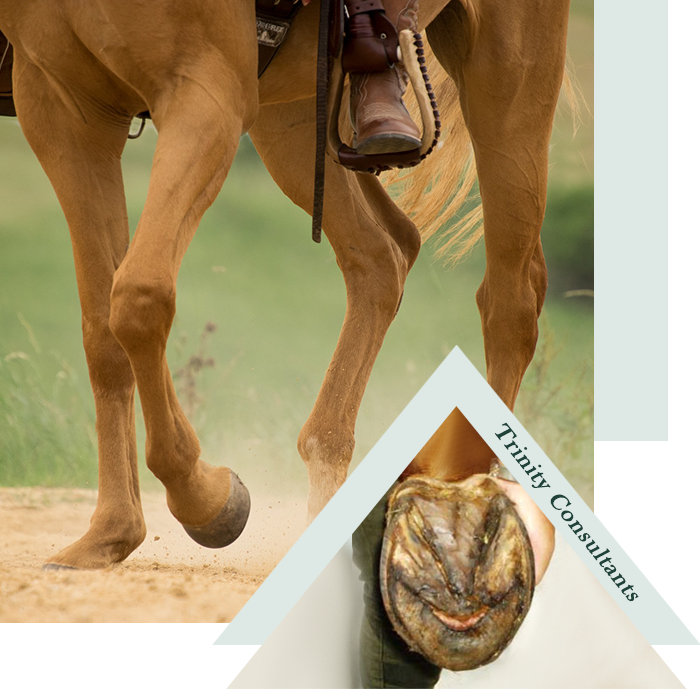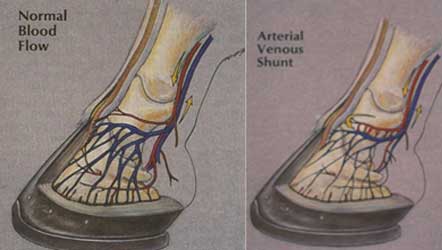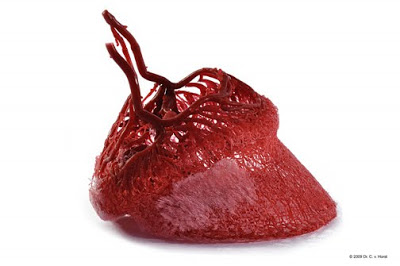What is Horse Laminitis?
Laminitis is known in the USA as Founder
Laminitis is known in the USA as Founder
Laminitis in horses is a serious and painful condition that affects the hooves, potentially leading to severe consequences if not properly managed. This article delves into the intricate details of laminitis in horses, exploring its causes, signs, diagnosis, and effective management strategies. Whether you’re a horse owner, veterinarian, or equine enthusiast, this comprehensive guide is crucial for understanding and preventing this debilitating equine disease.
What is Laminitis in Horses?
Laminitis in horses is an inflammatory condition within the hoof, particularly affecting the lamina, the tissues connecting the hoof wall to the coffin bone within the hoof capsule. This condition can lead to severe pain, lameness, and, in extreme cases, permanent damage to the horse’s hooves. Understanding laminitis in horses is essential for early detection and effective management to prevent long-term consequences.

Recognising Early Symptoms
Identifying the signs of laminitis early can significantly affect treatment outcomes. Common signs of laminitis include:
Clinical Signs and Advanced Symptoms
As laminitis progresses, more severe symptoms may become evident, including:
Symptoms will change as laminitis progresses from acute to chronic. Every horse is different and will show different symptoms and different degrees of pain.

Exploring the Causes
The exact cause of laminitis can vary, but several common factors contribute to its onset:
Other Contributing Factors
Additional factors that may cause laminitis include:

Diagnostic Methods
Early and accurate diagnosis of laminitis is crucial for managing it effectively. Common diagnostic methods include:
The Importance of Veterinary Diagnosis
Consulting with a vet is essential for accurately diagnosing laminitis. They can provide a comprehensive assessment and recommend appropriate treatment strategies.
Immediate Management Strategies
Once diagnosed, immediate steps must be taken to manage laminitis:
Long-term Management
Long-term strategies focus on preventing recurrence and managing underlying conditions:
Understanding the Risks
The risk of laminitis can be influenced by several factors, including:
Preventive Measures
Implementing preventive measures can reduce the risk of laminitis:
Acute Laminitis
Acute laminitis is the sudden onset of inflammation within the hoof, often presenting with severe pain and lameness. Immediate veterinary intervention is critical to manage acute laminitis effectively. Various factors, including dietary imbalances and mechanical overload, may trigger acute laminitis. Horses with acute laminitis require urgent care to prevent long-term damage.
Chronic Laminitis
Chronic laminitis, on the other hand, is a long-term condition in which many horses may experience recurring laminitis associated episodes. Management focuses on long-term care and preventing further episodes. Horses with chronic laminitis often require continuous monitoring and specialised care to manage their condition. The bone within the hoof capsule can rotate, leading to more severe cases. Chronic laminitis in horses can lead to a progressive deterioration of hoof health.
Equine Metabolic Syndrome (EMS)
EMS is characterised by obesity, insulin resistance, and a predisposition to laminitis. To prevent laminitis, horses with EMS require careful dietary management and regular vet check-ups. The disease and equine metabolic syndrome are closely linked to laminitis development.
Pituitary Pars Intermedia Dysfunction (PPID)
Also known as Equine Cushing’s Disease, PPID is a hormonal disorder that increases the risk of laminitis. Horses with PPID need medical management and careful monitoring to mitigate the risk. This condition affects the pituitary gland and can lead to laminitis by disrupting metabolic processes. Horses with PPID often require lifelong management to prevent episodes of laminitis.
Key Preventive Strategies
Prevention is always better than cure. Key strategies include:
Working with Professionals
Collaborating with vets and farriers is crucial in preventing laminitis. They can provide tailored advice and care plans to keep your horse healthy. Regular trimming and farriery are essential to maintain hoof health and prevent laminitic episodes. The School of Veterinary Studies provides extensive guidelines on preventing and managing laminitis.
Impact of Laminitis on the Hoof Structure
Laminitis causes significant changes within the hoof, including damage to the laminae, which can lead to the rotation of the pedal bone within the hoof. This condition can disrupt the blood supply within the hoof, exacerbating the problem. The tip of the coffin bone may also be affected, causing severe pain and structural changes. The horse’s weight also plays a critical role in the severity of the condition.
Role of the Lamina and Blood Supply
The lamina plays a crucial role in maintaining the structural integrity of the hoof. Inflammation of the lamina can severely affect the hoof’s function. Disruption of blood supply can lead to necrosis and further complications. Inside of the hoof, structural changes can affect the overall health of the horse.
Severe Cases and Their Management
In severe cases of laminitis, the horse may experience sloughing of the hoof or detachment of the hoof wall. These cases require intensive veterinary care and possibly surgical intervention. Acepromazine may be recommended in some cases for pain management. Older horses are particularly vulnerable to severe laminitis.
Clinical Signs and Diagnosis
The onset of clinical signs can vary, but common indicators include a bounding digital pulse and visible changes in the hoof. Radiographic imaging is essential for diagnosing the extent of laminar damage and pedal bone rotation. The dorsal hoof wall may also show characteristic changes.
Management of Laminitis
Effective management involves a combination of dietary regulation, pain management, and mechanical support through proper shoeing. Regular monitoring and adjustments are crucial to managing chronic laminitis successfully. The hoof begins to make changes early on and should be monitored closely.
Systemic Conditions and Laminitis
Systemic conditions such as severe systemic diseases and endocrine disorders can predispose horses to laminitis. Conditions like PPID and EMS are particularly associated with an increased risk of laminitis. These conditions can lead to pain and structural changes within the hoof. Laminitis can also show systemic implications beyond the hooves.
Impact on the Digestive System
Dietary factors can trigger laminitis, including ingesting undigested sugar and starch pushed through to the hindgut. Managing the horse’s digestive system is crucial for preventing dietary-induced laminitis. Endocrinopathic laminitis is often linked to dietary factors.
Role of Toxins
Toxins released during certain systemic infections or conditions can lead to laminitis. Identifying and managing these underlying conditions is essential to prevent laminitic episodes. The placenta and associated structures may also be involved in some cases.
Acute Laminitis in Mares
Acute laminitis in mares can be particularly challenging, requiring immediate intervention to prevent long-term damage. Hormonal changes and dietary imbalances are common triggers. Monitoring the mare closely for any signs of laminitis is crucial.
Chronic Laminitis Management
Horses with chronic laminitis require ongoing care, including regular trimming and monitoring for any signs of deterioration. Therapeutic shoes may be necessary to support the hoof structure, and the bone within the hoof must be carefully managed to prevent rotation. Chronic laminitis in horses is often a progressive condition requiring long-term care.
Observations of Limb Laminitis
Limb laminitis often involves inflammation and limb pain, necessitating targeted pain management and supportive care. Monitoring the clinical signs of laminitis in these cases is essential for timely intervention. The frog and sole of the hoof should be examined regularly. Support limb laminitis is a secondary condition that needs careful management.
Early Detection and Intervention
Recognising the early signs of laminitis and seeking veterinary care promptly can significantly improve the prognosis. Regular monitoring and preventive measures are essential. With timely intervention, the risk of causing further damage can be mitigated. The prognosis for horses with laminitis improves with early intervention.
Importance of Dietary Management
Controlling the intake of high-risk foods, such as those high in sugar and starch, can prevent dietary-induced laminitis. Ensuring a balanced diet is crucial for maintaining overall health. Changes in hoof health can often be linked to dietary factors. Pasture-associated laminitis is common in horses with high-sugar diets.
Collaboration with Veterinary Professionals
Working closely with vets and farriers ensures that horses receive comprehensive care tailored to their specific needs. Regular check-ups and proactive management can prevent many cases of laminitis. Dermal and epidermal health should also be monitored. The World Horse Organization provides extensive resources on equine care.
The Role of the Farrier and Hoof Growth
Regular hoof growth monitoring is essential for preventing laminitis. Farriers are crucial in maintaining hoof health through proper trimming and shoeing. Monitoring hoof growth patterns can help in the early detection and prevention of laminitis.
Importance of the Sole
The sole is another critical area that requires attention. Proper care and regular inspection of the sole can prevent laminitis-related issues. Farriers and vets can guide on maintaining the health of the sole to prevent laminitis.
Addressing Specific Laminitis Cases
Laminitis cases can vary significantly, requiring tailored management plans. Vets and farriers should work together to address the unique needs of each laminitic horse. Early intervention and personalised care plans are crucial for successfully managing laminitis cases.
Laminitic Horse Management
Managing a laminitic horse involves regular veterinary check-ups, proper diet, and consistent farriery. Each laminitic horse may have different needs, and it’s essential to tailor the management plan accordingly.
Equine Laminitis in Older Horses
Due to various health factors, older horses are more susceptible to equine laminitis. Managing equine laminitis in older horses requires special attention to diet, exercise, and regular veterinary care. Ensuring these horses receive proper care can significantly improve their quality of life.
Conditions Associated with Laminitis
Several conditions are associated with laminitis, including EMS, PPID, and other systemic issues. Understanding these conditions can help prevent and manage laminitis effectively. Vets can provide valuable insights into managing these conditions.
Horses and Ponies: Differences in Laminitis Management
While laminitis affects both horses and ponies, there are differences in their management. Ponies may have different dietary needs and exercise requirements. Understanding these differences is crucial for effective prevention and treatment of laminitis in both horses and ponies.
Bone in the Hoof: Structural Importance
The hoof bone, particularly the pedal bone, is crucial to its structural integrity. Any changes or damage to this bone can lead to severe laminitis issues. Regular monitoring and veterinary care are essential to ensure the health of the hoof bone.
Inside of the Hoof Wall: Key Areas to Monitor
The inside of the hoof wall is another critical area that requires regular monitoring. Any changes or damage within this area can indicate early signs of laminitis. Farriers and vets should regularly inspect the inside of the hoof wall for any abnormalities.
Prevention of Laminitis: Key Strategies
Preventing laminitis involves proper diet, regular exercise, and consistent veterinary care. To ensure their horses remain healthy and active, prevention of laminitis should be a top priority for horse owners. Implementing these strategies can significantly reduce the risk of laminitis.
Response to Treatment: Importance of Timely Intervention
The response to treatment can vary depending on the stage of laminitis and the individual horse. Early and timely intervention is crucial for a positive response. Vets and farriers should work together to monitor and adjust treatment plans if a horse has laminitis.
How Laminitis Can Affect Healthy Horses
Even healthy horses can be affected by laminitis under certain conditions. Understanding the triggers and early signs can help prevent laminitis in otherwise healthy horses. Regular monitoring and preventive measures are essential.
Stages of Laminitis in Horse or Pony: Understanding the Progression
Laminitis can occur in different stages, from mild to severe. Understanding these stages can help in early detection and effective management. Vets can guide recognising the stages of laminitis and appropriate interventions.
Suffering from Laminitis: Managing Pain and Discomfort
Horses suffering from laminitis experience significant pain and discomfort. Managing this pain through appropriate veterinary care and supportive measures is crucial, and pain management should be a key component of any laminitis treatment plan.
Treatment for Chronic Laminitis: Long-term Care
Treatment for chronic laminitis involves long-term care and regular monitoring. Developing a comprehensive care plan with the help of vets and farriers can help manage chronic laminitis effectively. Regular adjustments to the treatment plan may be necessary based on the horse’s condition.
Laminitis Due to Environmental Factors
Environmental factors like pasture conditions and weather changes can contribute to laminitis. Proper pasture management and monitoring can help prevent it. Horse owners should be aware of environmental triggers and take preventive measures.
Occurrences: Triggers and Prevention
A Laminitis condition in horses can occur when a horse is exposed to certain triggers, such as sudden dietary changes or prolonged standing. Understanding these triggers and implementing preventive measures can help reduce the risk of laminitis. Regular monitoring and proactive management are key.
Horses Seem More Prone: Identifying At-risk Horses
Some horses seem more prone to developing laminitis due to genetic or health factors. Identifying these at-risk horses and implementing targeted preventive measures can help manage laminitis risk. Vets can guide, recognise, and manage at-risk or affected horses.
Laminitis Affects the Overall Health
Laminitis affects not only the hooves but also the overall health and well-being of the horse. Managing laminitis requires a holistic approach to maintain the horse’s overall health. Regular veterinary care and proper management are essential.
Laminitis Varies: Individualised Care Plans
Laminitis varies in severity and presentation, requiring individualised care plans for each horse. Tailoring the management and treatment plans to the horse’s specific needs can improve outcomes. Vets and farriers should work together to develop these individualised plans.
Horses Confined: Managing Laminitis in Limited Space
Due to limited movement, horses confined to small spaces or stalls may be at higher risk of laminitis. Proper diet, exercise, and regular monitoring are crucial for managing these horses. Ensuring they have adequate space and opportunities for movement can help prevent laminitis.
Treating Laminitis: Comprehensive Care Approach
Treating laminitis involves a comprehensive care approach, including diet management, regular exercise, and consistent veterinary care. A collaborative effort between horse owners, vets, and farriers is essential for effective treatment. Based on the horse’s condition, regular adjustments to the treatment plan may be needed.
Following these guidelines, horse owners can effectively manage and prevent laminitis, ensuring their horses remain healthy and active.
Understanding laminitis in horses is vital for every horse owner. With the right knowledge and preventive measures, you can ensure your horse stays healthy and free from the debilitating effects of laminitis. Consult your vet for personalised advice and care plans tailored to your horse’s needs.
If you are in any doubt about your horse’s conditon, or how to prevent or treat laminitis, please do not hesitate to contact us by phone 01243 551766 or email info@trinity-consultants.com.
While most equine experts say there is no cure for laminitis and anything associated to laminitis, only proper management can control and prevent further episodes. Please call us, we think differently and have a product called L94 that will help horses with laminitis.
Acute laminitis can develop rapidly, sometimes within hours inside of the hoof or on the surface of the hoof. If it appears indeed that the horse has laminitis, please call us immediately.01243 551766.
Contact your vet immediately for an accurate diagnosis and appropriate treatment plan and also call us. 01243 551766
If you suspect your horse has acute laminitis, immediate veterinary intervention is crucial. Acute laminitis may present with severe pain and sudden onset of lameness. Quick action can help mitigate the damage and improve the prognosis. Your vet may recommend anti-inflammatory medications, dietary changes, and hoof support measures to manage the condition effectively.
Yes, there are specific treatments for acute laminitis to help your horse recover. Your vet may suggest pain relief medications, such as NSAIDs, to reduce inflammation and discomfort. Proper hoof care, including therapeutic shoeing and trimming, can also support the healing process. In severe cases, your vet might recommend using cryotherapy (cold therapy) to reduce inflammation and limit damage within the hoof.